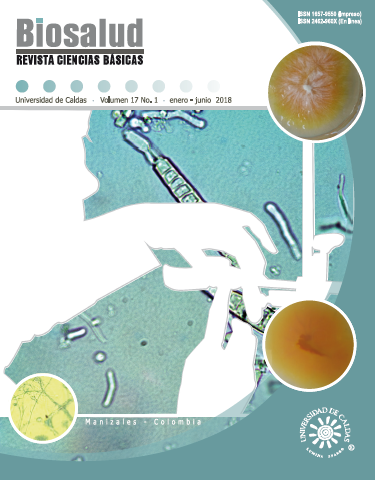Autores/as
Resumen
Los materiales que están en contacto con el sistema corporal requieren de la característica primordial que les permita su aceptación e integración en el organismo: la biocompatibilidad. De igual manera, deben exhibir excelentes propiedades mecánicas, tribológicas y topográficas para que su prestación del servicio en el tejido especificado sea el más óptimo, pudiendo esbozar estas características mediante la caracterización de estos materiales a través de técnicas espectroscópicas y microscópicas. En el presente trabajo, una válvula artificial para el corazón fabricada en titanio y recubierta con diamond-like carbon (DLC), material altamente biocompatible, fue sometida a análisis XPS, FTIR y morfológico. En estos se encontró una alta interdifusión del recubrimiento con el sustrato junto con una gran señal de enlaces sp3 . Los enlaces terminales CH3 suponen una película poco compacta. La rugosidad del recubrimiento fue baja y adecuada para fines hemocompatibles.
Palabras clave
Citas
2. De Mel A, Rafiei Y, Cousins BG, Seifalian AM. Modifying biomaterial surfaces to optimise interactions with blood. En: Williams R, editor. Surface Modification of Biomaterials. Methods Analysis and Applications. 1st Edition. Cambridge, UK: WoodHead; 2011. p. 255-283.
3. Mahapatro A. Bio-functional nano-coatings on metallic biomaterials. Mater. Sci. Eng. C. 2015;55:227-251.
4. Kwok SCH, Ha PCT, McKenzie DR, Bilek MMM, Chu PK. Biocompatibility of calcium and phosphorus doped diamond-like carbon thin films synthesized by plasma immersion ion implantation and deposition. Diam. Relat. Mater. 2006;15:893-897.
5. Butt MZ, Khaleeq-ur-Rahman M, Ali D, Akmal A, Naseem S. Deposition and characterization of multilayer DLC:Mo thin films grown on silicon substrate by off-axis pulsed laser deposition technique. Appl. Surf. Sci. 2015;331:407-414.
6. Bociaga D, Sobczyk-Guzenda A, Szymanski W, Jedrzejczak A, Jastrzebska A, Olejnik A, et al. Mechanical properties, chemical analysis and evaluation of antimicrobial response of Si-DLC coatings fabricated on AISI 316 LVM substrate by a multi-target DC-RF magnetron sputtering method for potential biomedical applications. Appl. Surf. Sci. 2017;417:23-33.
7. Dey RM, Patil D, Kulkarni S. Integrated characterization study of diamond like carbon (DLC) synthesized by 2.45GHZ microwave electron cyclotron resonance (ECR) plasma CVD. Surf. Coat. Technol. 2017;328:30-43.
8. Sharma R, Pandey AK, Sharma N, Sasmal D, Barhai PK. Diamond like carbon films as a protective surface on PMMA for biomedical applications. Surf. Coat. Technol. 2010;205:2495-2502.
9. Tang XS, Wang HJ, Feng L, Shao LX, Zou CW. Mo doped DLC nanocomposite coatings with improved mechanical and blood compatibility properties. Appl. Surf. Sci. 2014;311:758-762.
10. Chen T-S, Shiue S-T. Hydrogenated amorphous carbon films used for carbon-sealed double-coated optical fibers. Thin Solid Films. 2012;520:6765-6773.
11. Antonov VE, Bashkin IO, Bazhenov AV, Bulychev BM, Fedotov VK, Fursova TN, et al. Multilayer graphane synthesized under high hydrogen pressure. Carbon. 2016;100:465-473.
12. Couderc P, Catherine Y. Structure and physical properties of plasma-grown amorphous hydrogenated carbon films. Thin Solid Films. 1987;146:93-117.
13. Toyoda T, Sutou Y, Komiyama S, Ando D, Koike J, Wang M. Mater. Trans. 2016;57:362-367.
14. Itoh H, Sasai R, Kamiya M, Lee S, Kuroda K, Tsutsumoto T. Adhesion improvement of diamond films to silicon nitride substrate for cutting tool. En: Mittal KL, Zeist AH, editores. Adhesion aspect of thin films. Vol. 1. The Netherlands: Ridderprint bv, Ridderkerk; 2001. p. 141-158.
15. Wang J, Ma J, Huang W, Wan L, He H, Liu C. The investigation of the structures and tribological properties of F-DLC coatings deposited on Ti-6Al-4V alloys. Surf. Coat. Technol. 2017;316:22-29.
16. Zhang D, Shen B, Sun F. Study on tribological behavior and cutting performance of CVD diamond and DLC films on Co-cemented tungsten carbide substrates. Appl. Surf. Sci. 2010;256:2479-2489.
17. Liu JX, Yang DZ, Shi F, Cai YJ. Sol–gel deposited TiO2 film on NiTi surgical alloy for biocompatibility improvement. Thin Solid Films. 2003;429:225-230.

 PDF
PDF
 FLIP
FLIP


















